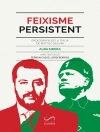Sunni-Shi’i relations have undergone significant transformations in recent decades. In order to understand these developments, the contributors to the present volume demonstrate the complexity of Sunni-Shi’i relations by analyzing political, ideological, and social encounters between the two communities from early Islamic history to the present.
Tabela de Conteúdo
PART I: SUNNA AND SHI’A IN THE AGE OF MUSLIM EMPIRES Responses to Unwanted Authority in Early Islam: Models for Current Shi’i and Sunni Activists; J.Lassner Early Hanbalism and the Shi’a; N.Hurvitz The Confrontation Between Sunni and Shi`i Empires: Ottoman-Safavid Relations Between the Fourteenth and the Seventeenth Century; M.Scherberger Encounters between Shi’i and Sunni ‘ulama’ in Ottoman Iraq; M.Litvak The Ottoman Dilemma in Handling the Shi’i Challenge in Nineteenth-Century Iraq; I.S.Üstün PART II: SUNNIS AND SHI’IS AND THE MODERN STATES Religious Extremism and Ecumenical Tendencies in Modern Iraqi Shi’ism; A.Baram Quietists Turned Activists: the Shi’i Revolution in Iraq; O.Bengio The Sunni-Shi’i Struggle over Lebanon: a New Chapter in the History of Lebanon; E.Zisser The Wahhabiya and Shi’ism, from 1744/45 to 2008; G.Steinberg Unity or Hegemony? Iranian Attitudes to the Sunni-Shi’i Divide; Z.Maghen Debating the ‘awakening shi’a’: Sunni Perceptions of the Iranian Revolution; M.Hatina Interesting Times: Egypt and Shi’ism at the Beginning of the Twenty-First Century; R.Brunner Epilogue: The Sunni-Shi’i Paradox
Sobre o autor
MEIR LITVAK Professor in the Department of Middle Eastern and African History at Tel Aviv University, Israel. Ofra Bengio is a Senior Research Fellow at The Moshe Dayan Center for Middle Eastern and African Studies and a Professor in Middle East History at Tel Aviv University.
MEIR Litvak is the Director of the Center for Iranian Studies and an Associate Professor at the Department of Middle Eastern History at Tel Aviv University, Israel.












